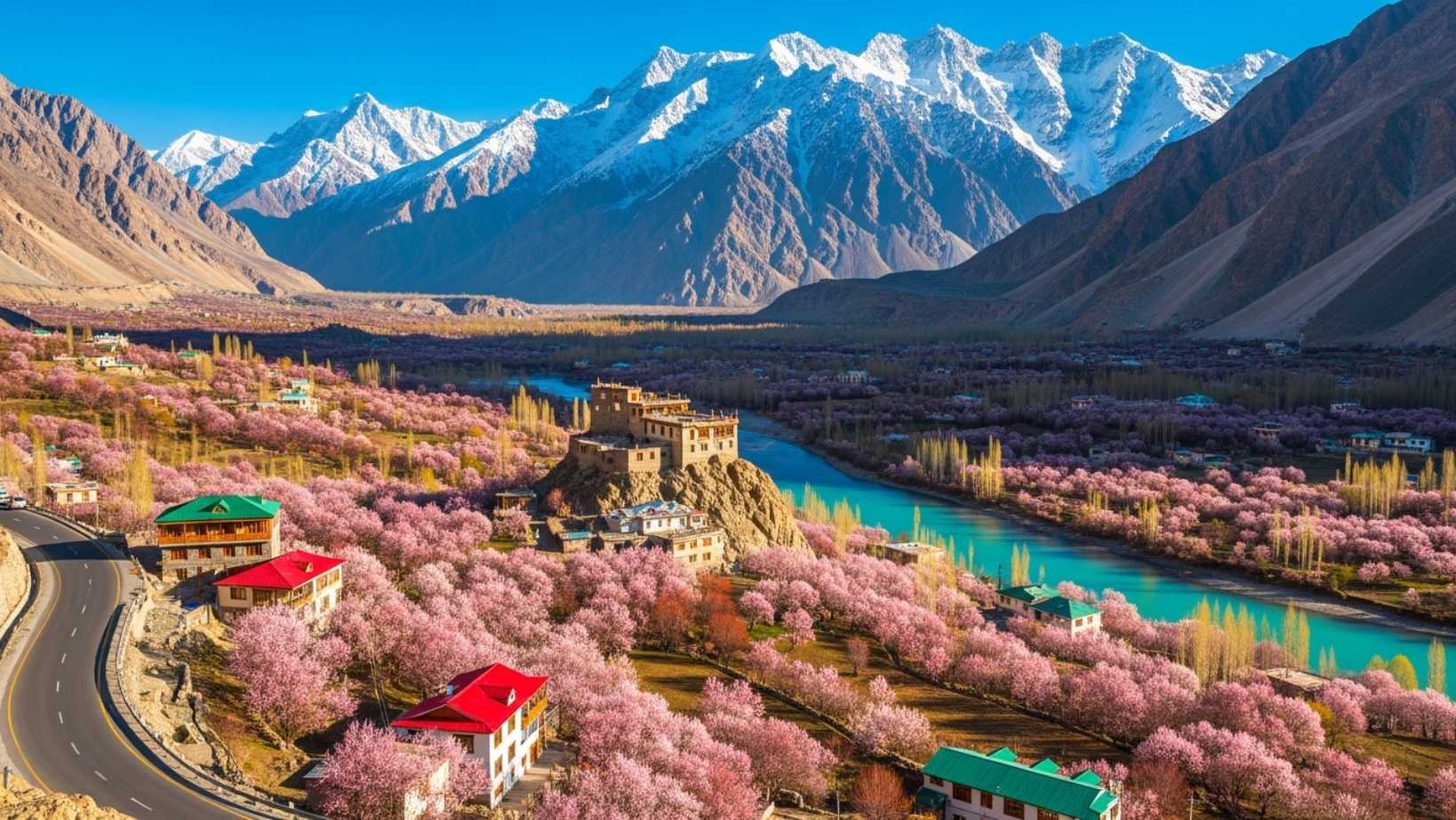Thousands spend fortunes trekking through Patagonia’s remote wilderness for glimpses of turquoise glacial lakes and snow-capped peaks, enduring days of grueling hikes and unpredictable weather. Meanwhile, northern Pakistan harbors an equally spectacular mountain landscape where you can drive directly to electric-blue waters and access some of Earth’s highest peaks without the punishing multi-day expeditions. I discovered this during an October visit when the weather was crisp but comfortable, and the apricot harvest had just finished—locals were still celebrating with traditional dances in village squares.
You’ll discover turquoise waters that rival any South American lake
Attabad Lake wasn’t supposed to exist until a 2010 landslide created this stunning 13-mile reservoir with waters so brilliantly turquoise they look photoshopped. The color comes from glacial sediment suspended in the water, creating the same phenomenon that makes Patagonia’s lakes famous. But here’s what makes it different: you can drive right up to the shoreline on the Karakoram Highway.
Local boat operators will take you across the lake for about $10, and the water temperature hovers around 50°F year-round—cold but swimmable if you’re brave. The villages submerged beneath created an accidental tourism economy that transformed former farmers into boat captains. I met Captain Rashid, who showed me photos of his family home now 300 feet underwater, yet he spoke about the lake with unexpected affection—it brought the world to his doorstep.
Unlike Patagonia where you need camping gear and wilderness permits, guesthouses line the lake’s shores offering hot meals and comfortable beds for $15-20 per night. The contrast couldn’t be starker.
The world’s second-highest peak becomes your neighbor here
K2 base camp expeditions launch from Skardu, making this region the gateway to the world’s most dangerous mountain. But you don’t need to be a mountaineer to experience the majesty—Fairy Meadows offers jaw-dropping views of Nanga Parbat, the world’s ninth-highest peak, after just a jeep ride and moderate two-hour hike. I arrived at dawn and watched the “Killer Mountain” turn pink as sunrise hit its western face, a spectacle that happens almost daily when weather cooperates.
The meadows sit at 10,500 feet, and the air is thin enough that you’ll notice it climbing stairs, but nothing like the oxygen deprivation at Patagonia’s high-altitude trekking routes. Local guides cost about $30 per day and know secret viewpoints where you can photograph Nanga Parbat without crowds. Ahmed, my guide, pointed out where German climbers established Camp 1 in 1934—the mountain has claimed more lives per summit attempt than any other 8,000-meter peak.
The Hunza Valley provides equally spectacular mountain vistas without any hiking at all. Ancient Baltit Fort sits on a hilltop overlooking the valley, offering 360-degree views of peaks that would be headline attractions anywhere else. Built over 700 years ago, the fort’s restoration was completed in 1996, and you can explore its wooden balconies and chambers for just $3 entrance fee.
Spring transforms this valley into a pink wonderland locals protect fiercely
From late March through early April, millions of apricot trees explode into pink and white blossoms, creating a spectacle that rivals Japan’s cherry blossom season without the crowds. The Hunza people have cultivated these orchards for over 2,000 years, and apricots remain central to their economy and cuisine. I tried hunza water—fresh apricot juice mixed with glacier melt—and understood why locals claim it’s the secret to their legendary longevity.
Baltit Fort dominates the valley from its rocky outcrop, and standing on its upper terraces during blossom season feels like floating above a pink cloud. The fort’s architecture reflects Tibetan and Kashmiri influences, with intricately carved wooden pillars and small windows designed to conserve heat. Local families have maintained the surrounding orchards for generations, and they’re protective of their agricultural heritage—you’ll notice “Please Don’t Pick Fruit” signs in multiple languages.
The valley’s isolation preserved unique cultural traditions that disappeared elsewhere in Pakistan. Women move freely without veils, ancient Burushaski language survives in daily conversation, and Ismaili Muslim practices blend with pre-Islamic customs. During my visit, I witnessed a traditional polo match played on a sloping field with minimal rules—the game looked more like organized chaos than sport, and locals explained that Hunza’s version predates the British-codified game by centuries.
The Karakoram Highway connects these valleys to the outside world, but landslides frequently close sections during monsoon season from July to September. October through May offers the most reliable access, with spring’s blossoms and autumn’s harvest festivals marking peak seasons. Pakistani hospitality transforms every guesthouse into a family experience—expect multiple cups of butter tea and persistent dinner invitations from people you’ve just met.
